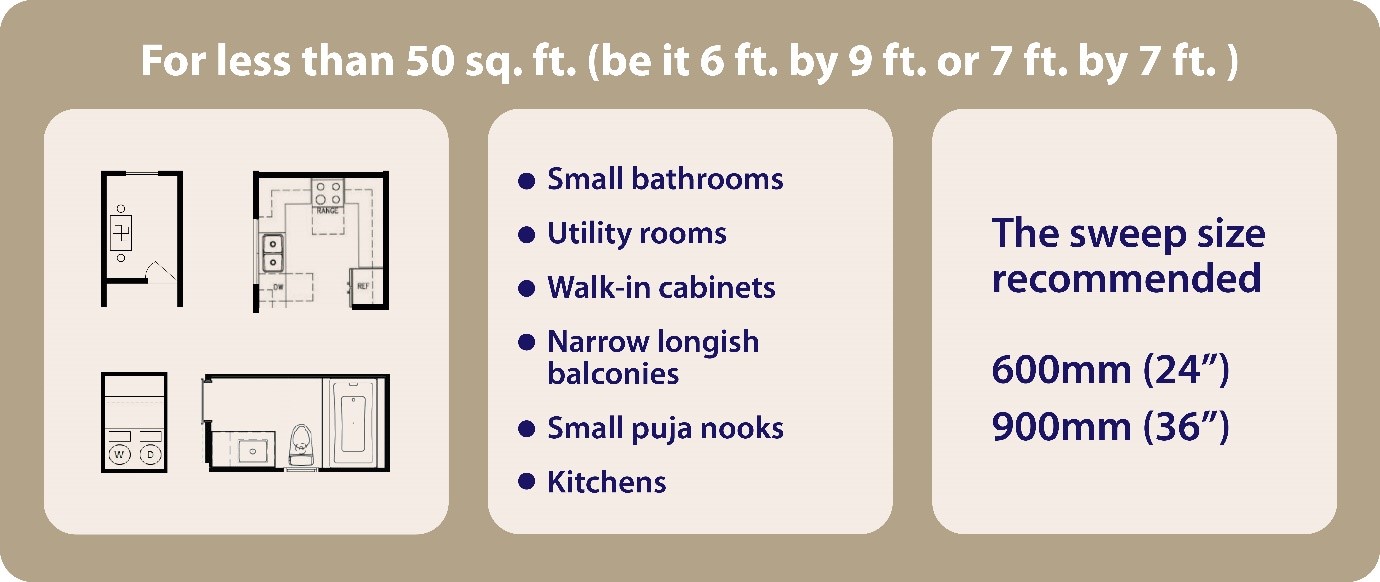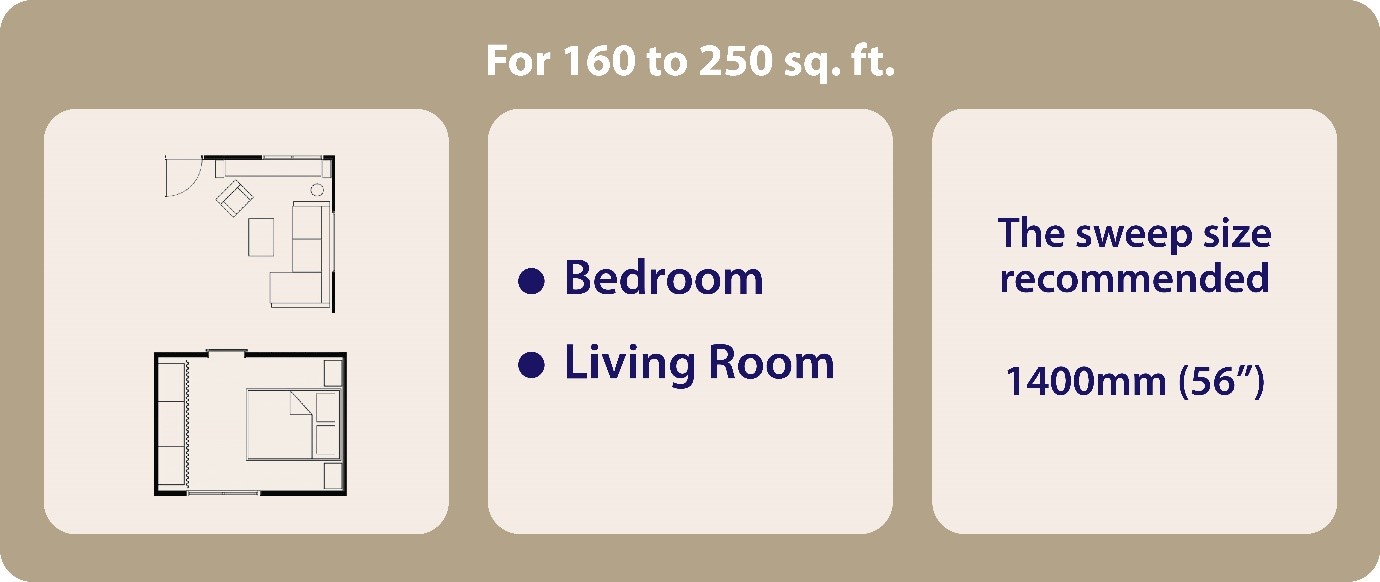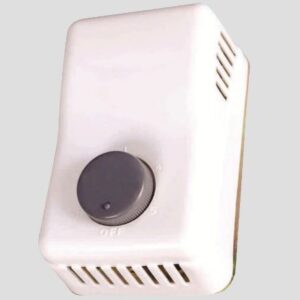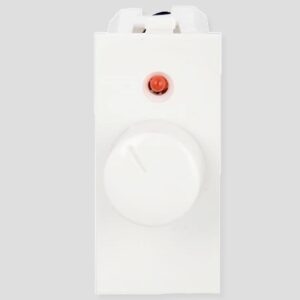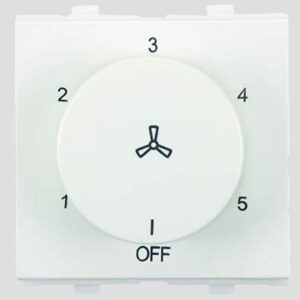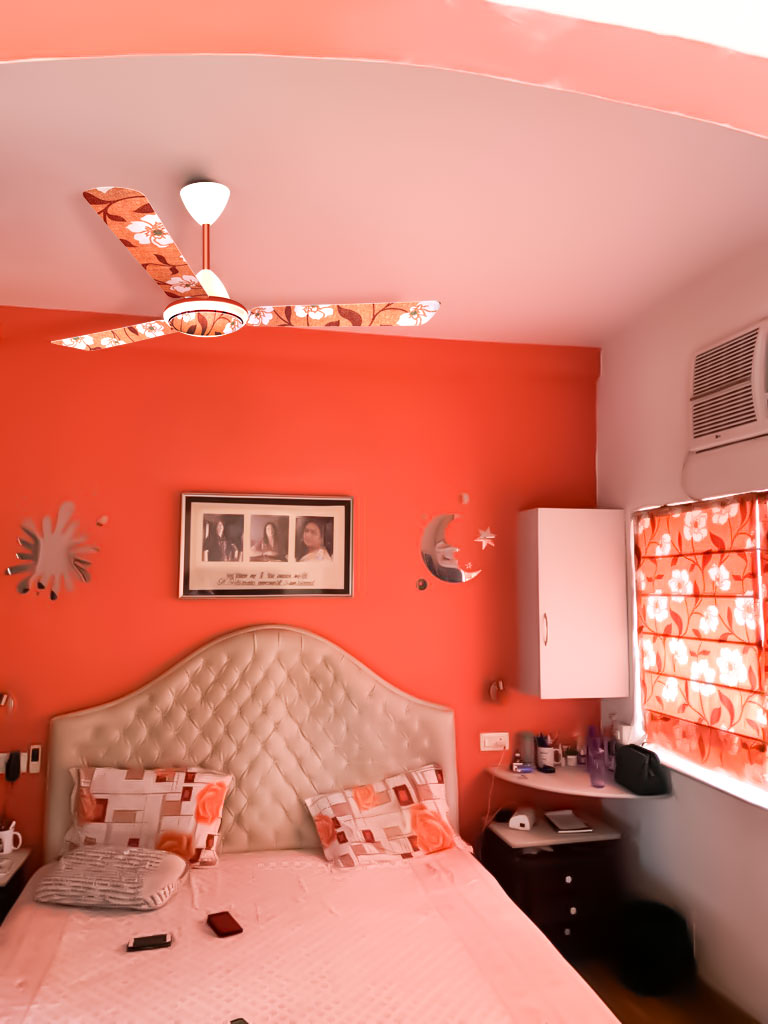IFMA is wholeheartedly supporting the mandatory BEE Star Rating programme for Ceiling fans. This comes into force from the new year day of 2023.For the consumers and users of fans. This is great news as it would spell huge savings on the electricity bills of every household. This also means a range of benefits for nation and environment.
IFMA has got an interesting mascot named Mr. Energy Saver which will lead all the communication platforms to aggressively promote the Star Rating Programme.
Mr. Energy Saver is a robust, smiling, confident, assured looking mascot who will instill confidence in the minds and hearts of viewers about the proposition of Savings. The animation has been brought out after deep research by IFMA and Wackytoon Studios, who have given birth to him. Wackytoon’s creative team is famous for origin of Chotta Bheem, a famous cute Indian cartoon. This mascot will figure in all IFMA communications for Energy Savings for promoting Energy Efficient Ceiling fans. The mascot is a registered design property of IFMA and has to be used by
IFMA and members as per guidelines given. Check for the animation in 3D –It is amazing and the expressions of the mascot are convincing.
Ceiling fans are designed based on operating conditions of the environment of a particular place. In a hot and humid country like India, the central purpose of an electric fan is to create airflow and deliver a cooling effect.
So, what exactly do 4-5 bladed fans do? Do more blades increase the airflow? Are these better than three-bladed ones?
Let’s find out.
In India, ceiling fans are usually stand-alone appliances to generate cooling comfort in hot and humid weather conditions. Although air conditioners have gained traction in places with scorching temperatures, ceiling fans have not lost their importance even in today’s time.
The Indian Ceiling fan industry is on the advent of a huge revolution. With the new mandatory Star Rating regime soon to be implemented by the Bureau of Energy Efficiency (BEE), the face of the industry will undergo a distinct makeover. Before the fan industry, numerous other product industries in India have been at the same juncture. With energy conservation being a global mantra and India being committed to the cause, its various industries have made their contribution by creating and promoting products which save power for the consumer and the country.
While a changeover of this nature at an industry level is always challenging for all players involved, it is a significantly tougher task this time for the Indian fan industry. The magnitude of the change that the industry will go through can be gauged by the fact that 95% of the Ceiling fans which are sold today by the industry do not qualify for even a 1 Star rating under the revised norms of the BEE. Therein lies the challenge, but with challenges there always come opportunities.
At the heart of a Ceiling fan lies the motor, and it is this motor which decides how efficiently a fan performs. The new era of efficiency calls for a much more efficient motor at the heart of the fan; and for many, the answer lies in the new technology called Brushless Direct Current or BLDC Motor. This technology comes bearing fruits like 50% less power consumption and consistent performance across a large voltage range, resulting in a sure shot way to a 5 Star BEE Rating. While there is no doubt on the positives that this technology provides, the ride for adoption of BLDC will not be as smooth as it appears to be.
The BLDC Motor technology depends on an electronic controller and permanent magnets. With the ongoing global crisis for electronic parts and the selective geographical availability of magnets, the industry will not be able to convert a large part of its offerings into BLDC motors, even if it wants to. Then there is the issue of cost. The BLDC motor currently costs 2.5x-3x of current fan motor costs and the aforementioned factors are not going to make costs softer in the foreseeable future. While the Indian consumer is conscious of energy efficiency and this warrants more efficient products; they may not be ready to and, in a lot of cases, may not even have the ability to pay a significant premium to adopt them. Therefore, the Ceiling Fan product range will have to depend on the old war horse which has carried its load for more than half a century – the Induction Motor.
It was believed for a long time that the fan industry had achieved a high level efficiency with the induction motor. After all, this motor was performing admirably to address the dual needs of high air delivery at an affordable cost for the tropical but not so affluent Indian consumer. But with the exigent situation that the industry faces today, the brightest minds in this trade have challenged themselves and are bringing out levels of efficiency which were previously unheard of and thought to be unachievable by the humble induction motor. As of this time, engineers of the industry have been able to develop induction motors for Ceiling Fans which provide up to 40% energy saving at a cost delta which is significantly lesser than that of the BLDC motor.
While BLDC is undoubtedly the future of motor technologies for fans, I do not believe that the induction motor has run its course. It is still here to stay, and with the industry putting its might and minds into making it a better performing and a more efficient device, Ceiling fans with induction motors will continue to remain the bread and butter for this industry for years to come.
As one of the nation’s premier heat transfer products firms noted in their seminars on Tier IV requirements, “Outside of the core, the fan is the most important component of the cooling package.”
Aerofoil fan blades provide efficiency and low noise using classic aerofoil design. Aerofoil fans provide uniform, high volume airflow with low power consumption for optimum efficiency using the same aerodynamics that create thrust. Aerofoil fans have a round leading edge, a sharp trailing edge, and in profile or cross section, look similar to a teardrop that has been flattened on one side. As air approaches the blade’s leading edge, the stream splits and travels above and below the blade. Air is deflected across the convex curve along the top of the blade and along the flat or concave curve on the bottom of the blade, and flows downward over the sharp trailing edge as it leaves the blade.
According to Bernoulli’s Principle, the faster moving air across the top of the blade creates less pressure than the slower moving air on the bottom of the blade. This creates lift in an airplane wing or airflow in a fan. Aerofoil fans function just like a series of small airplane wings attached to a hub, with one notable exception. In axial fans, the aerofoil’s twisted design ensures that the incident angle between the aerofoil and the airflow is constant along the blade length, giving a uniform blade loading for high efficiency, low noise fans.
Many factors have influence on designing high quality fans. Some factors are relative to fan noise. The fan noise will be controlled reasonably from the model, especially from the mechanism of fan blade shape. The optimization theory is used in the design of high-quality fans too. But every property of the fan has different weighting factors in the design and in the development stages. The fan blade shape parameters, such as the number of blades, rotational speed of fan, chord of fan, and blade profile etc. affect the Sound Pressure Level.
Following are some benefits of using aerofoil design in Fan blades :
• Increases the spread and velocity of fan blade, which helps to increase Air Delivery.
• There are no sharp edges as such, it helps to reduce noise.
• Camber in the Aerofoil helps with Air delivery with increasing pitch of the blade. Hence it reduces the torque induced to deliver same amount of air.
• In Aerofoil fans weight variation is possible as per requirement.
• Aerofoil blade fans are aesthetically better. Due to reduction in torque and noise the efficiency of Aerofoil blade fans is comparatively high then normal fan blades and gives better performance over normal fan blades.
In the modern world, where home appliances have undergone a revolution, the ceiling fan is still largely regarded as one of the best solutions for comfort during summer. This blog aims to make you aware regarding general facts and choose the right ceiling fan as per your needs.
Here is a buying guide for those who are looking for a ceiling fan in the market. The tips are given enabling you to unlock the optimum benefit from a fan.
Things to remember while buying a ceiling fan
There is an array of things that must be considered while buying ceiling fans likelike budget, intended usage, sweep size, performance, energy efficiency, aesthetics, technical details and much more. We shall take a look at all these parameters below:
SWEEP OF THE CEILING FAN REQUIRED FOR THE ROOM/SPACE
-What is the Sweep Size:
It is the length of the blade span which is the diameter of the circle that you see when the fan blades are in motion.
-Standard Sweep Sizes of fans available in India –
600mm (approx. 24 inches)
900mm (approx. 36 inches)
1050mm (approx. 42inches)
1200mm (approx. 48 inches)
1400mm (approx. 56 inches)
Some brands also have sweep sizes that are in between the above Standard Sizes. For example, 1225 mm, 1250mm,1300 mm, 1320 mm, etc. Understanding sweep sizes will help you to choose the right type based on room sizes.
Measurement and understanding of the space or room must be assessed beforehand, though.
Start with measuring the size of rooms and height of the ceiling in feet or meters. It is important to measure the distance of the side walls too. Check the ceiling hook, from which the fan is supposed to be hung. It is ideal if it is in the geometrical center of space.
Appropriate fan sweep sizes, recommended as per the room sizes:
FOR VERY SMALL SPACES
FOR SMALL SPACES
FOR NORMAL SIZE OF SPACE/ROOM
FOR BIGGER SIZE SQUARE ROOM
-For 160 to 250 sq. ft. room which is of almost square configuration- the sweep size must be 1400mm (56″).
FOR A RECTANGLE OR L-SHAPED ROOM, 2 FANS OF 1050MM (42″) OR 1200 MM (48″) SWEEP SIZE CAN BE INSTALLED
Other Important Criteria including Understanding of down rods lengths and correct distances of fan blades from floor or ceiling for optimum performance.
–Always consider one size larger fan if you are planning to install it on your veranda or balcony.
–While installing a fan in rooms with a higher ceiling, consider sweep size one level higher.
–If more fans are to be installed in a room or hall, then the optimum distance between the tips of the blades should be at least 4 feet. This will ensure no interference of the airflow from both fans.
–If the fan is to be installed close to any wall or partition, ensure that the distance of blade tip and wall or partition is at least 2 to 3 feet. This will ensure zero back suction.
–Length of the down rod is important for optimum air dispersal and maximum cooling comfort. The down rod length required depends upon the height of the ceiling of the room. For safety reasons, a ceiling fan should always hang at least 7 to 7.5 feet above the floor. However, the ideal height of blades from the floor should be 8.5-9 feet. For adequate airflow, there should be at least 9 to 10 inches of air space between the blades and the ceiling.
Different companies have different lengths of down rods. The length of down rods ranges from 220 mm (8.5inches approx.) to 275 mm (approx. 10.8 inches) for different brands. For a standard height of Ceilings, these lengths are good enough. You need to ensure that the distances from ceiling to blade level and blade level to the floor must follow as recommended above.
–For higher ceilings calculate the additional length required and buy a composite length longer down rod to meet these two parameters.
For other parameters, consider the following tips before you buyFan models in all major brands with 1200mm sweep size are generally available in two speed ranges – Normal speed is around 340RPM (Rotations per minute) and Hi-Speed which is 380 RPM and above.
Ceiling fans come in variety of different number of blades, though 3 blades are most popular in India. However, in certain cases you may decide for 4 or 5 blade fans too.
3-bladed Ceiling Fans in India
Again, there are two types of Motor technologies –Induction Motor and BLDC. If compared, BLDC fans are expensive but reduce your energy bills.
BLDC Motor Technology vs. Induction Motors in Ceiling Fans
-There are also large options for LED fans. These have lots of benefits. Know its benefits before you buy.
-Like most premium appliances some fans also come with remote control. There are of course benefits of same.
Remote Control of fans is now a way of life
-The Star rating on Ceiling Fans given by Bureau of Energy Efficiency will be mandatory in the near future. This rating will give you an indication of which Star Rating fan to go for. You can assess your initial cost plus electricity saved over a period of fans working life and decide accordingly.
A BEE initiative of Star Rating
Ceiling fans are available in various styles, colour shades and different finishes. Take a trip to the nearby store or explore various ranges in brand websites as per your budget and needs.
Read more to stay informed and Happy Shopping!
The evolution of ceiling fans with respect to styles and designs has taken them far beyond an appliance merely meant for improving the ventilation of the living space.
The most worthwhile upgrade has perhaps been the addition of light kits to ceiling fans. Although ceiling fans with decorative lights have been around for quite some time in the West, they have gained popularity in India over the past few years, notably after LED lights entered the market.
From living rooms to dining rooms, bedrooms to lobbies, ceiling fans with lights enhance both the visual and functional value of virtually every room.
For your living space to remain fashion-forward in the years to come, read these 7 compelling reasons to use ceiling fans with lights.
Let’s begin.
Optimum Use of Space: A ceiling fan with light eliminates the need for tube lights and light fixtures on the wall. The functional LED lights of 8 to 18 watts are usually mounted on the bottom of the fan, thus leaving you with ample free space to add other striking design elements such as paintings or artifacts to the wall to enhance the overall aesthetics.
Uniform distribution of light: Ceiling fans are installed in the center of a room or a space for equal air distribution. Additionally, it is the most optimum location for dispersing light evenly throughout the room. A wall-mounted light or tube light tends to provide more light when in close proximity to the source. However, it can cast shadows or create dark areas when at a distance. The ceiling fans with lights distribute the ambient light at 360 degrees while giving the same lumens per square foot or more all around.
Facilitates energy efficiency – A ceiling fan with light is equipped with LEDs built into it. Up to 84% of your lighting bills can be lowered by replacing your incandescent bulbs or CFL lamps with LED-lit ceiling fans. The ceiling fan with lights provides an energy-saving lighting alternative while also providing optimum cooling in every corner of the room.
Provides a dramatic effect to the ambiance – Ceiling fans with lights hung on the top of dining tables make the meal look more appealing as they create no shadows from the crockery or people standing in the line of light, as opposed to wall lights. It creates a feeling of a fine dining experience in a restaurant. The dimming feature of many LED ceiling fans is also perfect for the bedroom as it produces an intimate ambiance with remote control in your hand. You can dim the lights in the living room to suit the mood.
Liberty of Choice – Ceiling fans with lights come in an array of hues. You can choose cool white light for summers or warm white light for winters. You can also adjust the intensity of the light by toggling a few buttons on the remote controller right from the comfort of your couch/bed, which further adds to its convenience.
Decorative appeal: LED ceiling fans these days come in ethnic, contemporary, and futuristic-inspired designs. The glow created by the ceiling fans with lights gives rise to a sense of wonder as to the origin of the light. By incorporating both the essential functions (light and air) into one stylish package, ceiling fans with lights are capable of delivering a decorative touch that perfectly satisfies the functionality and aesthetics of any room. They can be used to create any mood you desire for any occasion.
Ease of Control – Remote controls have become a must-have feature for any gadget, and we rely on them increasingly. Typically, LED fans to come with remote control handsets, which is an added luxury.
Final words
The ceiling fan you choose for your luxury home, farmhouse, or commercial space will add timeless beauty wherever it is installed. Thus, the best way to accentuate the aesthetics of your architecture is to install ceiling fans that have lights incorporated in them.
With advancement in technology, Fan industry is going through a massive transformation responding to the demands of time and customers. Improving customer experience and creating a feeling of delight are of utmost importance in the priority list of all major fan brands.
The motors of all fans are designed to optimally perform on 230 volts 50Hz single phase A C supply. 50 Hz means Sinusoidal waveform of 50Hz as is received from the mains.
The issue of complaints which have nothing to do with poor quality of fans is often reported by customers who use Square Wave form inverters when the power supply is disrupted. These in expensive inverters are not meant for running appliances like Fans. Some of these deliver very high voltage- up to 350V and high frequency to the tune of 150Hz. This causes big harm to the fan.
Let’s discuss a bit about the two types of Inverters and their Pros and Cons. Square Wave Inverter vs. Sine Wave Inverter
Furthermore, there’s another type of inverter that you can take advantage of:
This one is called “Modified Sine Wave Inverter.” This type of inverter is better than the Square wave inverter and more affordable than the Sine wave inverter though it is strongly recommended that for safety of your costly appliances you should buy Sine Wave Inverters only.
So you get it that when a fan is operated on square/ near square current waveform, they draw more current and hence reduce performance life. Square wave creates jerkily revolving magnetic field, making the rotor to make jerky motion and hence noise. Unfiltered harmonics lead to vibrations in the coil leading to humming noise in fans.
We strongly recommend you to go in for the Sine wave Inverters of a good brand to get the best out of your costly appliances and safeguard them in the long term.
Let’s explain different kinds of Speed Regulators for Ceiling Fans and the pros and cons of all. The objective is for consumers to know the importance of buying a good regulator as these days the companies do not supply regulators along with fans (except Remote Regulators). Often a cheap or incorrect outdated model of regulator can generate unpleasant humming noise and cause harm to the fan motor, which of course is not the fault of fan but of your buying decision.
Resistance/Choke Type Regulators
Till about 25/30 years back, all the Fan Companies used to sell fan with a compatible Regulator, which was often Resistance type (bulky in size). These were Power Guzzlers. These regulators had spools of wire with different amounts of resistances. When you set the knob at a particular position, you included a certain resistance in series with the fan. The resistance in circuit consumed its power. So, fan consumed same energy even at lower speeds and the regulators generated lot of heat.
There were also Choke Type regulators available during that period, which were better than Resistance but not the best solution.
These are both now virtually extinct.
Triac Based –Step less Regulators
These Step less regulators were the initial changeover from Resistance type or Choke type Bulky regulators and were primarily meant for dimming lights as well. These are still available and you may be tempted to buy because of low price.
These are better than the Resistance based regulator as it saves energy but they distort the Sine wave of the power supply which creates the humming sound of the motor. Distorted power supply is also not good for long-term health of the motor.
Capacitor type Regulators
This design and technology are the most appropriate Wall Mounted Regulator presently.
These helps save energy at various lower speed steps of regulator and do not become heated.
These regulate the fan speed by regulating the waveform of power supply and there is no distortion of the sine wave of the supply voltage.
So, these are your best choice but remember not to buy a less known brand or a local brand of such regulators which may be compromising on lower quality of components or trespassing certain circuits. It is better to spend another hundred rupees and buy a reputed brand to avoid any issues in the package.
Remember one point –Even with the best of Capacitor Regulator, your fan may not give uniform speed difference between each step as the motor designs of different brands and models is different. But these good regulators will not give any unpleasant humming sound or cause damage to motor.
So, let’s choose our wall mounted regulator wisely for the better performance of the Fan.
Remote Regulators
The latest flavor of the customers is Remote Type Regulators. These are expensive and are provided by companies as standard in most of the BLDC fan models. Some other non-BLDC fan models in upper end models and Fans with light too have these as standard and in same fan package.
For more details —Read this ———
The bladeless fan is a fairly new concept that’s gaining popularity in the West. It’s a revolutionary innovation that has taken over the home cooling space by storm. And that is evident from the fact that, every year, an increasing number of homeowners are now switching from conventional fans to bladeless fans.
But despite these fans being so popular in the West, we are yet to go bladeless in India. And that brings us to the question – When is India going to ‘Go Bladeless’?
Though we don’t have an exact answer to that question, we will put across a few facts related to bladeless fans that will compel you to think if your next ceiling fan should be a bladeless one. Let us begin by finding out how a bladeless fan works.
How Bladeless Fans Work
Unlike conventional fans that blow air down, bladeless fans suck air from below and push it outwards, towards the walls, through the slits on the periphery of the fan (as you can see in the above image). This is considered a more efficient way of cooling as it pushes the air to all corners of the room and helps maintain unified temperature. Also, it is claimed that the bladeless fans generate a far more powerful airflow than the conventional fans, as bladeless fans work on the air-multiplying technology that is used in jet engines and turbochargers for generating high airflows.
The question for experts is if this is correct for a tropical country like India , where high quantum of air delivery is required in ceiling fans.
So does it Make Sense to ‘Go Bladeless’?
Well, there are more than a few benefits that bladeless fans offer. Let us go through them one by one.
The first and foremost benefit of bladeless fans is that they provide an even airflow. This is very critical in homes with air conditioning because uniform air distribution helps achieve the desired temperature, faster and this in turn helps save on energy bills. It also helps prevent hot air being trapped in the ceiling and cold air trapped on the floor.
Bladeless fans are ideal for rooms with low ceilings. Usually, people opt for wall fans or pedestal fans for rooms with low ceilings as there’s always a fear of people getting injured by a traditional fan. But bladeless fans being safer, there’s no fear of injury.
The next benefit of going bladeless is that they are noiseless. Unlike conventional fans that produce noise because of the movement of fan blades cutting through the air, bladeless fans don’t make any noise, at all. In fact, you would be surprised to know that conventional fans, even in the best of their shape, make some noise.
Maintenance of fans is another important factor when choosing a fan. The good thing about bladeless ceiling fans is that they do not accumulate dirt and dust as easily as the conventional fans. Also, they are easier to clean.
Bladeless fans are available in several styles and designs. They also come with unique features such as integrated dimmable LED lights to balance the room temperature. These features, however, are present in the new age conventional fans also, and so we will leave it for you to decide.
So, What’s Your Take?Now that you have some idea about bladeless fans let us know whether or not you would like to see bladeless fans being introduced in India. Let us know your take along with your reasons. We would love to read them.
Look around you and you would notice a rapidly increasing trend of Low noise (noiseless as some term them) Ceiling Fans which may give only moderate air delivery, designed especially for AC rooms. Having done away with the noise of Window air conditioners, the fan noise seems a bother. This trend surely brings a greater role of Blades design /configuration/aerodynamics and the role of experts in the same. Material substitution which has already been embarked upon by most leading brands too will have a role to play.
There are two classes of affluent Indian Customers.
One who want just white or plain fans without embellishments and want fans in décor to be non-intrusive. Others are the ones who want fans to supplement the décor value of the room with some unique looks and aesthetics. So far, in past 40 years or so, the aesthetics have largely been focused on motors/color shades or metallic finishes. On blades it was the geometrical design or embellishments on it called blade trims.
The world has meanwhile moved on to the unique blade profiles. Not just an option of 3 or 4 or 5 blades and not just the material change. What is interesting is that these aesthetically entirely different blade profiles also appeal to the class of people who as of now like non-intrusive fans.
Look at some concepts floating around in the world today.
 Folded blade, in single blade it will work as double blade combination as well as noise will be lower because of closed tip
Folded blade, in single blade it will work as double blade combination as well as noise will be lower because of closed tip Alternate Blade combination (big and small). In this combination of one big and one small, it creates combined effect. It can be designed to give higher Air delivery and spread.
Alternate Blade combination (big and small). In this combination of one big and one small, it creates combined effect. It can be designed to give higher Air delivery and spread.Now these types and more interesting designs like these are the smart thoughts of industrial designers but the Aero Designers (experts in Aerodynamics) have an equally or more role to play. It is a collaboration of two minds to produce “Wow effect “fans.
Let it be explained a bit more about the role of Aerodynamics on such unique designs.
So, why should we care about aerodynamics? Why does it matter? Have you ever ridden in an open-top car and felt the wind pushing past your face? It’s exhilarating and you feel really alive. Aerodynamics is all about studying physics behind moving objects. Understanding how air behaves when we slice through it at speed is incredibly important.
With the aerodynamics expert involved, optimum blade shape using aerodynamics characteristics are calculated. In fans blades used to transform the kinetic energy in the wind and it has to be designed carefully to enable to absorb energy with its greatest efficiency. They have several advantages in meeting the intrinsic requirements for wind in terms of design point, off-design capabilities and structural properties. Although it can involve very complex math, the basic principles include how fluids flow in different ways, what causes drag (fluid resistance), and how fluids conserve their volume and energy as they flow.
Ideally, we want to shape the blade so the flow of air around it is as smooth as possible—so it’s laminar rather than turbulent. The more turbulence there is, the more air resistance the fan will experience, the more energy it will consume, and shall result in lower performance and higher noise. Material of blade is also an important parameter.
Another interesting trend noticed in the recent times in fans is that dual blades are employed. This trend is in both Ceiling Fans as well as Portable fans. Have a look at LG ceiling fan launched in India and here is an image of another fan possibly for kids’ room. The benefits claimed with this addition are yet to be validated but the trend surely needs a close watch.
So, get the industrial designers and aerodynamic experts collaborate and let the brand stand apart with unique models.
During the late 80’s, interior decoration studios in Taiwan used to feature a very unique idea of curtain coordinated ceiling fan. The designer was pasting customer-provided curtain cloth to cover wooden blades creating a tapestry for coordinated look of a ceiling fan.
This influenced many interior designers worldwide to experiment. It can be seen at small studios in Connecticut in USA too.
The ceiling fans of Indian variety have curved aluminum blades. So it is a bit more difficult than flat wooden blades. Also, Indian fans have bottom motor covers which are required to be coordinated for a complete design look. The bottom cover is curved but placing tapestry element here is quite doable.
Have a look at one such Indian fan with tapestry of curtain laminated—and see how it looks in the room.
This was first experimented in the early 90’s with a downstream unit in Calcutta. The design studio had a downstream unit for customers looking for such decoration. The design process began by taking one meter of cloth and the cloth was pasted and laminated. Although, it was not hugely successful due to quality of lamination technology at that time, but it was hugely appreciated by the users.
Challenges faced during the decoration procedureThe units faced many challenges while pasting .The edges got crumpled after some time. It resulted in not sustainable lamination which with time turned opaque with dust. In the present times, technologically advanced pasting and lamination systems have been invented and all such issues should not be there.
Does this concept interest anyone—May be this is for a niche market yet totally worth exploring.
The cost and scopes of customizationThe estimated cost of applying tapestry of curtains on an Indian fan could be Rs. 300/- excluding the price of the cloth. It is pretty economical, as far as current rates of the home decorations are concerned.
The additional benefit is whenever you change your curtains or tapestry; the downstream unit will be ready to give a coordinated look on the fan blades and disc at a very reasonable price.
Any Takers? Any thoughts?
.
Recent Post
Categories
Tags
Bladeless Ceiling Fans BLDC Fans BLDC Motor Ceiling Fans Ceiling Fan Ceiling Fans Dual Blades in Portable Fans Energy Saving Fans Fan Blades Fan Inverters Fan Regulator Fans Fans are Covid-19 warriors Guide to Buying Ceiling Fan History of Electric Fans History Of Fan IFMA IFMA Editorial Indian Fan Industry Induction Motors Ceiling Fan LED Ceiling Fans Low Noise Ceiling Fans Pankahs Pankha Museum Pedestal Fans Portable Fans Remote Control Fan Remote Control of Fans Star Rated Ceiling Fans Unique Blade









